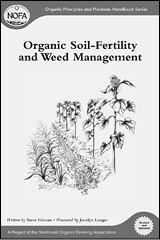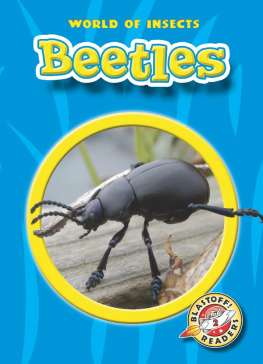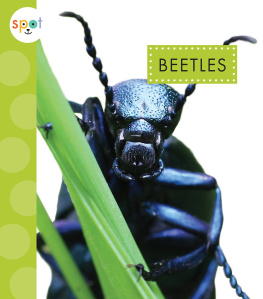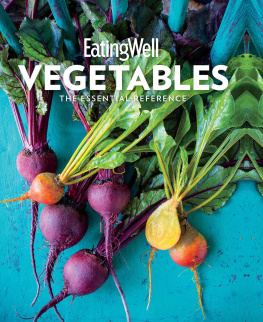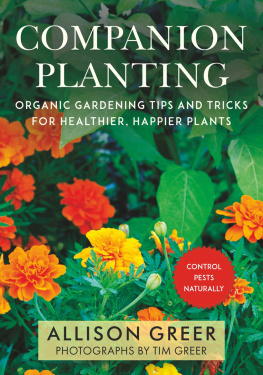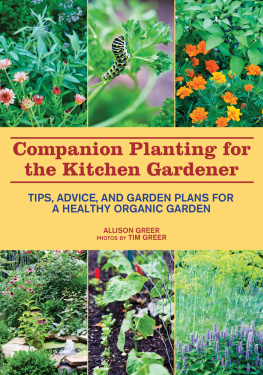Thanks first to my family for their help and support. Barry Marshall and Jeri Burns welcomed me to share their garden, while Zachary patiently acquiesced whenever Aunt Fern needed to stop playing and write. Rory Bradley lifted my spirits by proclaiming his pride and excitement about my debut as an author. Tom Cole kept house and home together throughout months of research and writing and offered loving encouragement at every stage.
Im grateful to Barbara Ellis and Ellen Phillips for teaching me how to be a good garden writer and editor. Thanks to Chris Bucks and Karen Bolesta at Rodale for offering me the opportunity to write this book. My editor, Anne Halpin, was a terrific partner in shaping the manuscript. Lizzie Harper provided beautiful illustrations. Tara Long, Keith Biery, and Nancy N. Bailey at Rodale ensured that the pages look elegant and read well from start to finish.
Many thanks to gardening consultant and author Sally Cunningham for creating the excellent design for a garden to attract beneficials, shown on pages 54 and 55.
I appreciate the insightful comments and corrections offered by technical reviewers Janet Bachmann, of Riverbend Gardens in Fayetteville, Arkansas; Dr. Linda Gilkeson, entomologist; and Beth Gugino, postdoctoral research associate at the New York State Agricultural Experiment Station, Cornell University.
For offering great gardening tips and answers to questions, I owe thanks to many fine home gardeners, farmers, university staff, and technical experts, including Joel Allen (Cornell Cooperative Extension of Columbia County), Brian Caldwell (Cornell University), Julie Callahan (Massachusetts Department of Agricultural Resources), Bev and Bud Cole, Leslie Cole, Dr. Scott Craven (University of Wisconsin), Don DeVault, Melanie DeVault (Pheasant Hill Farm), Mark Dunau (Mountain Dell Farm), Bill Foster (BioWorks, Inc.), Bruce Frasier (Dixondale Farms), Brian Goldman, Miguel Guerrero (Organic Materials Review Institute), Craig Harmer (Gardens Alive! Inc.), Diane Hartzell, Shawn Hill, Norbert Lazar (The Phantom Gardener), the late Bob Love, Sharon Lovejoy, Pam Marrone (AgraQuest), Bing McClellan (Green Light Company), Rose Marie Nichols McGee (Nichols Garden Nursery), Scott Meyer (Organic Gardening magazine), Kevin Moran (Troy Biosciences, Inc.), Jean Nick, Nancy Ondra, Barbara Pleasant, Dr. Steve Reiners (Cornell University), Pam Ruch (Organic Gardening magazine), Mary Lou Shillinger, Katie Smith (The Farm at Millers Crossing), Nan Sterman, Heidi Stonehill, Richard Vento (St. Gabriel Laboratories), Eileen Weinsteiger (Rodale Institute), Carolyn Kay Wheeler, and the Columbia County Master Gardeners. I also learned a great deal from conferences, books, and newsletters of the Natural Organic Farming Association (NOFA) and NOFANew York, as well as publications from Cooperative Extension in many states and from the National Sustainable Agriculture Information Service.
Visualize your vegetable garden exactly as you wish it could be. All of your favorite crops are there, in just the right amounts to supply you with fresh produce every day. The soil is dark and crumbly and moist. The paths are well mulched. Theres not a weed in sight, but cheerful flowers bloom here and there among the beds. Birds sing in the shrubs and trees nearby, but no rabbits or woodchucks ever dare show their furry heads. Slugs, beetles, and caterpillars have produced nary a single hole in a leaf. Every plant is the picture of health, without a yellow leaf or blemished fruit to be seen.
Its a paradise, isnt it? And although this paradise is a fantasy, a healthy organic garden can be a paradise of life and plenty. Thats not to say it will be completely pest-and problem-free, but the soil will be rich and healthy, the plants will be vigorous, and pest infestations will rarely reach a crisis stage. Creating a healthy organic garden isnt a one-weekend project. It may take several years to develop a flourishing chemical-free garden, depending on the quality of the soil you started with, the resources you have available, and the amount of time you can devote to it.
REAL-LIFE GARDENING
Is your garden still on that multiyear road to achieving a healthy natural balance? Perhaps youre struggling to improve soil that was a rocky wasteland or a dry sandlot when you first started gardening. Maybe rabbits eat up half your crop of lettuce and salad greens, and you cant even consider growing corn because the local raccoons or deer would get to it before you could harvest it. Or perhaps the problems in your garden stem from the demands of the world beyond the backyardtheres just too little time to balance work, family, and community obligations with the needs of the garden.
Whatever the reason, if your vegetable garden is less than a paradise, this book is for you. Its filled with practical solutions to the gardening problems we all face. Advice for controlling insects, diseases, weeds, and animal pests abounds, but thats not all. Youll find practical ideas and helpful hints for all the logistical problems of gardening, too: where to find space for starting seeds indoors, how to plant small seeds efficiently, how to set up a crop rotation plan, how to decide when to fertilize and what to use, how to reduce the time you spend weeding and watering, and lots more.
HEALTHY GARDEN BASICS
Healthy plants are more resistant to problems than stressed plants. The more you can do to promote a healthy garden environment, the less youll have to struggle with fighting pest and disease problems. In undisturbed natural environments such as meadows and forests, its rare for pest problems to reach epidemic proportions. For the most part, plants and their pests stay in balance. However, our vegetable gardens are not undisturbed natural environments. We dig in the soil; we plant seeds and transplants and pull out unwanted plants; we put up fencing; and we harvest leaves, fruits, and roots. We choose the plants we want to growand some of them arent well adapted to our local climate and conditions. We plant in neat rows and beds. These are a lot of changes from a natural state. Even so, we can use gardening practices that mimic features of natural environments to help keep the balance and prevent disease or insect invasions.
TEND THE SOIL
The most important part of a healthy garden environment is biologically active soilsoil full of the living organisms that process nutrients, that help plant roots absorb nutrients and water, and that protect plants from pathogens.
The best way to tend garden soil is to enrich it with organic matter to stimulate the food web. The food web is the community of animals, insects, and microorganisms that live in the soil. Earthworms, nematodes, bacteria, fungi, and mycorrhizae (a specialized type of fungi) are part of this web, and their activity produces soil that is ideal for plant growth. Unfortunately, tilling and digging can kill some types of soil organisms and destroy the habitat for others. Synthetic fertilizers, harsh pesticides, and other materials put into the soil can kill even more. But good garden practices can support and enhance the underground community and let it work for the benefit of your plants. The more you can do to encourage living things in your garden soil, the better your crops will grow and produce. The Soil entry in this book explains how to overcome soil problems and build a diverse subterranean food web in your garden.
COVER THE SOIL
Bare soil is the exception to the rule in natural systems. You can see that in your own yardif you dig a garden bed but then leave it alone, it wont stay bare for long. If its spring or summer, plants will sprout. If its fall, leaves will drop from the trees and cover the bed. Only persistent effort keeps garden beds clear of vegetation or leaf litter. Dont fight natures tendency here; instead, work with it. After you dig a garden bed, if you dont plan to plant it right away, cover it up. Spread a layer of organic mulch or plant a cover crop. Or if you want to warm the soil, cover it tightly with black plastic.








